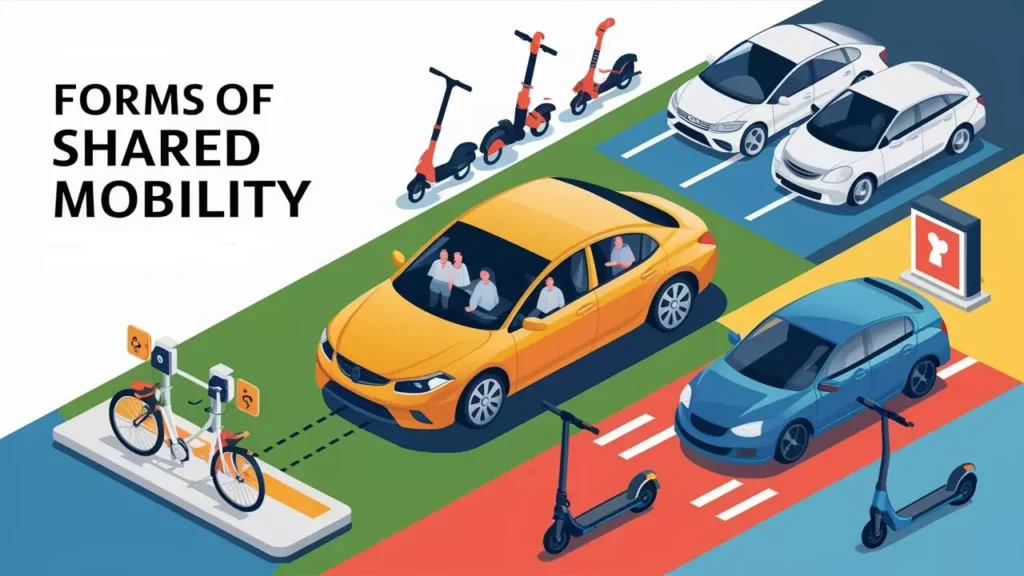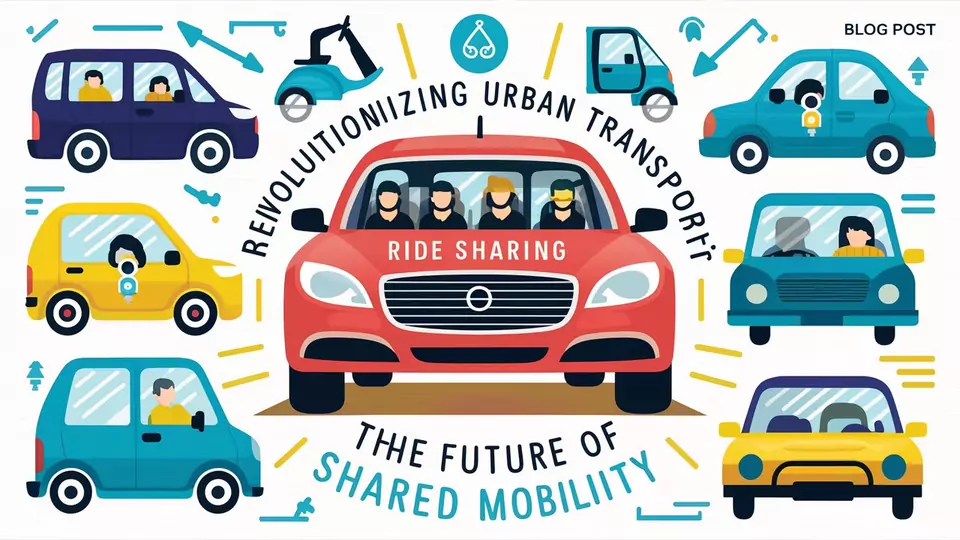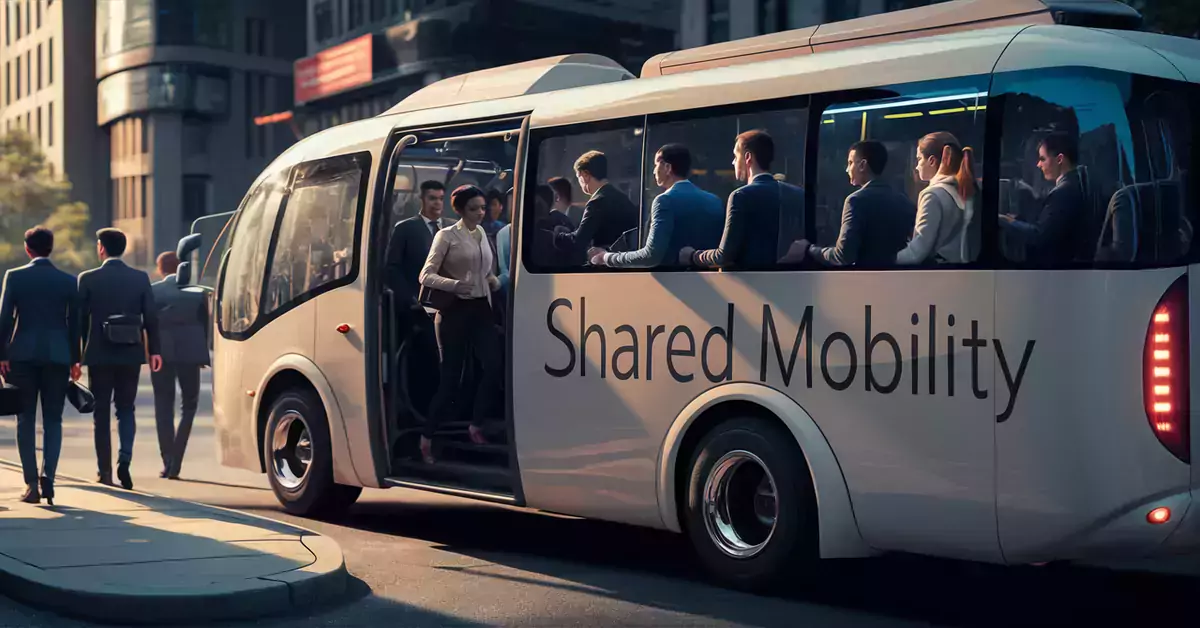Introduction
Shared mobility is revolutionizing the way we think about transportation. From ride-sharing apps like Uber and Lyft to bike-sharing programs in bustling cities, shared mobility offers an alternative to traditional car ownership that is both economically and environmentally beneficial. As urbanization continues to grow, the need for efficient, accessible, and sustainable transportation solutions becomes more critical. This comprehensive guide aims to demystify shared mobility for beginners, exploring its various forms, benefits, and future prospects. By the end of this article, you will have a thorough understanding of shared mobility and its potential to transform urban transportation.
What is Shared Mobility?
It refers to transportation services that are shared among users, allowing individuals to access various modes of transport on an as-needed basis. This concept moves away from private vehicle ownership towards a more communal approach, leveraging technology to provide convenient and flexible transportation options.

Forms of shared mobility include:
- Ride-sharing: Services like Uber and Lyft where users book rides via a smartphone app.
- Car-sharing: Platforms such as Zipcar that allow users to rent cars for short periods.
- Bike-sharing: Programs like Citi Bike in New York City that provide bicycles for short-term use.
- Scooter-sharing: Companies like Bird and Lime that offer electric scooters for rent.
It is driven by the need to reduce congestion, lower transportation costs, and minimize the environmental impact of traditional transportation systems.
Benefits of Shared Mobility
Environmental Benefits
Shared mobility significantly reduces the number of vehicles on the road, leading to lower greenhouse gas emissions and decreased air pollution. By promoting the use of bicycles, electric scooters, and public transportation, shared mobility encourages a shift towards more sustainable modes of travel.
Economic Benefits
For individuals, it can be more cost-effective than owning and maintaining a private vehicle. Users pay only for the transportation they need, saving on expenses such as fuel, insurance, and parking. On a broader scale, shared mobility can reduce infrastructure costs for cities, as the need for extensive road networks and parking spaces diminishes.
Social Benefits
Shared mobility enhances accessibility, providing transportation options for people who may not own a car. This can be particularly beneficial in urban areas where parking is limited and traffic congestion is high. Additionally, it fosters a sense of community as individuals share rides and travel resources.
Types of Shared Mobility Services
Ride-sharing
Ride-sharing services match passengers with drivers of private vehicles via a smartphone app. Popular platforms include Uber, Lyft, and Didi Chuxing. These services offer convenience, often being cheaper and faster than traditional taxis.
Car-sharing

Car-sharing services allow users to rent vehicles for short periods. Companies like Zipcar, Car2Go, and Turo provide a range of vehicles that can be booked via an app or website. Car-sharing is ideal for those who need occasional access to a vehicle without the hassles of ownership.
Bike-sharing
Bike-sharing programs provide bicycles for public use, typically through a network of docking stations. Users can rent a bike for a short trip and return it to any station within the network. Examples include Citi Bike, Vélib’ in Paris, and Mobike. These programs promote physical activity and reduce reliance on motorized transport.
Scooter-sharing
Electric scooter-sharing services offer a convenient and fun way to navigate urban areas. Companies like Bird, Lime, and Spin allow users to locate and unlock scooters using a smartphone app. Scooter-sharing is popular for short trips and helps alleviate congestion on busy streets.
How Shared Mobility Works
Booking Process
Most shared mobility services require users to download a mobile app, create an account, and provide payment information. Once registered, users can locate available vehicles or rides, book them, and pay for the service through the app.
Pricing Models
Pricing for services varies. Ride-sharing typically charges based on distance and time, while car-sharing may offer hourly or daily rates. Bike and scooter-sharing services often charge by the minute or offer subscription plans for frequent users.
Technology Involved
It relies heavily on technology, including GPS for locating vehicles, mobile apps for booking and payment, and data analytics for optimizing service efficiency. Advanced technologies like AI and machine learning are also being integrated to improve route planning and user experience.
Challenges and Solutions in Shared Mobility
Safety Concerns
Safety is a significant concern in shared mobility, particularly for ride-sharing services. Ensuring driver background checks, vehicle inspections, and providing in-app safety features are crucial measures to address these concerns.
Regulatory Issues
Shared mobility services often face regulatory hurdles, including licensing requirements and operational restrictions. Collaboration between service providers and government authorities is essential to develop regulations that support innovation while ensuring public safety.
Technological Challenges
Maintaining and upgrading the technology infrastructure for shared mobility can be challenging. Continuous investment in app development, data security, and network connectivity is necessary to provide reliable services.
The Future of Shared Mobility
Innovations and Trends
The future of it looks promising with advancements in autonomous vehicles, electric transport, and integrated mobility solutions. Autonomous ride-sharing fleets could revolutionize urban transport, offering safer and more efficient travel options.
Potential Impact on Urban Planning
It has the potential to reshape urban landscapes by reducing the need for parking spaces and promoting the development of pedestrian-friendly infrastructure. Cities may see a shift towards mixed-use developments that prioritize accessibility and sustainability.
Conclusion
Shared mobility offers a viable solution to many of the transportation challenges faced by modern cities. By reducing congestion, lowering emissions, and providing cost-effective travel options, it plays a crucial role in the future of urban transport. Embracing shared mobility can lead to more sustainable and livable cities, benefiting both individuals and communities. Explore shared mobility options in your area and contribute to a cleaner, more connected world.

